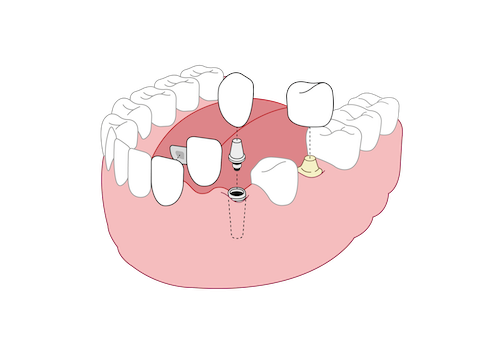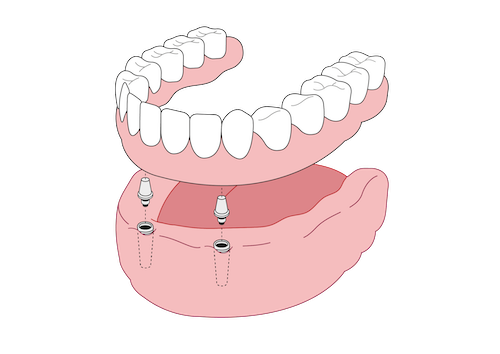9
Keep smiling using a combination of options
A combination of treatments may be preferable, or used, to replace different teeth in the same mouth and to restore chewing, comfort, and your smile to the best possible level.
|
Image
 |
Image
 |
When/why should you choose this option?
- You need to restore a long span of missing teeth.
- You have bone loss in the jaw, which may mean a combined option is most suitable to support and anchor the replacement teeth.
- In this situation, a combined option may provide a cost-effective solution.
What do you need to be aware of?
The risks involved will depend on the combination of treatments used and your individual situation. Here are some things to bear in mind:
- There is an increased risk of caries on or around the teeth that help to support a prosthesis, which could lead to further tooth loss. Good oral hygiene is essential to preserve these teeth.
- Further tooth loss may affect how a prosthesis functions and how comfortable it feels.
- Over time, there is also the risk of a false tooth weakening, causing it to break off from the prosthesis.
- Dental implants can lead to problems in the soft tissue or bone around the implants. Your dentist will call this: peri-implant disease. It is caused by bacteria build-up around the base of the dental implant and along the gum line; those with gum disease elsewhere in the mouth are at greater risk.
- Other mechanical complications may include cement failure, screws loosening, and fractures to denture teeth and implants.
What will you need to do to improve your chance of long-term success?
- Brush your teeth twice a day with a toothpaste containing at least 1,100 ppm fluoride if your risk of dental caries is low. If the risk of caries is high, your dentist may recommend a toothpaste with higher fluoride content and further fluoride treatments.
- Use dental floss and/or interdental brushes to clean between your teeth. This is especially important around the teeth that help to support the prosthesis.
- Remove your denture(s) and clean them thoroughly with a soft toothbrush after each meal.
- It is advisable to soak your dentures overnight in a suitable denture cleanser. Avoid hypochlorite cleansers for metal-based dentures.
- Eat a well-balanced diet that is low in sugar.
- Your dentist will assess your risk and need for periodic review. This might be between 3-6 months depending on his/her recommendation.
What if there are problems?
There may be different solutions available, according to your individual situation and problem. For example:
- if you develop peri-implant or gum disease, your dentist may be able to treat it as it occurs and work with you to improve your oral hygiene;
- if you have further tooth loss, your prosthesis may need to be modified or remade to ensure it continues to work properly.
- if your restorations suffer a mechanical failure, they may need to be repaired or replaced as they fail;
- you have recurring problems, your dentist may suggest an alternative option to make oral care easier for you.
- it becomes necessary to remove your implants, you and your dentist can agree on the best plan of care for you.
What other factors do we need to consider?
- Invasiveness of procedure: This will vary according to the treatments selected to restore your teeth.
- Treatment fees: Combined options vary in fees depending on the care that is most suitable for you.
How does this option affect you?
Combined treatment options, if successful, can help to considerably improve your quality of life.